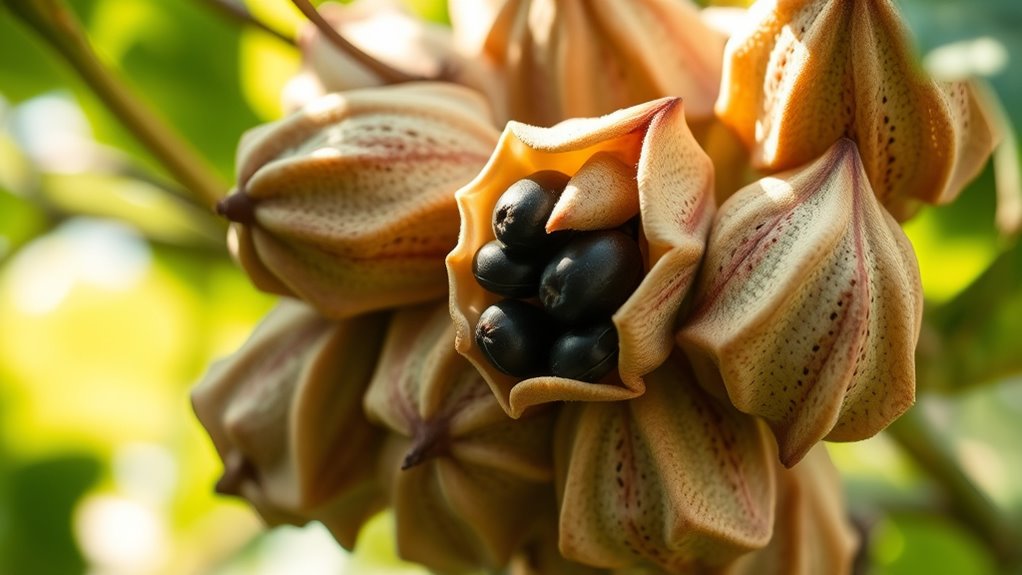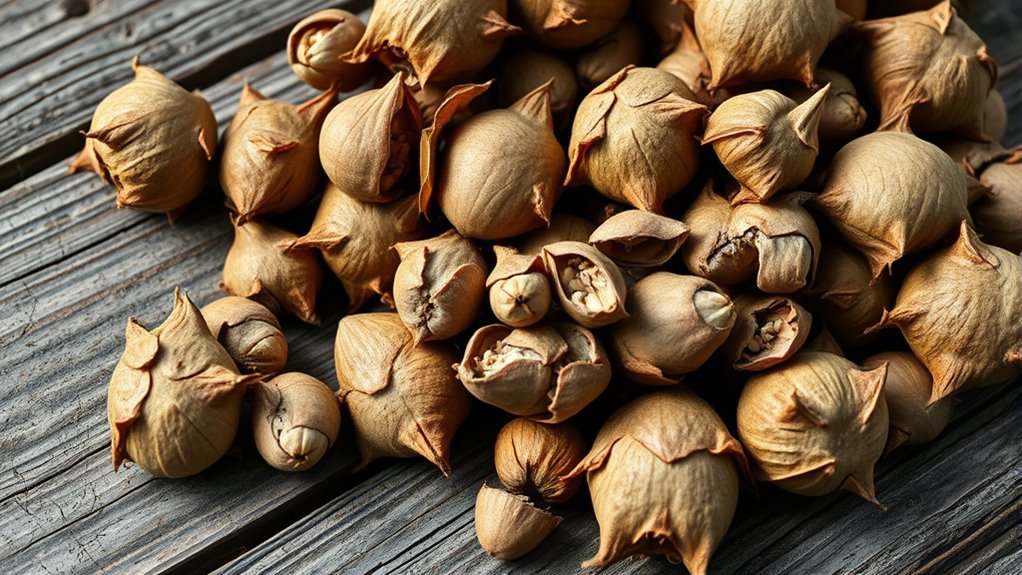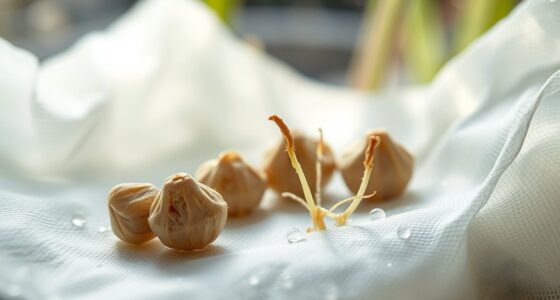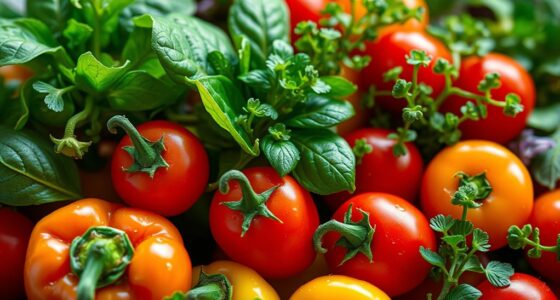Proprietary seed pods may seem convenient, but they often come with hidden costs. Their plastic components and chemicals can harm the environment and pose health risks. Plus, they tend to be pricey compared to traditional seeds or reusable options. Considering the environmental and health impacts, they might not be worth the investment. If you keep exploring, you’ll discover smarter, more sustainable ways to grow healthy plants without unnecessary expenses.
Key Takeaways
- Proprietary seed pods often contain non-biodegradable plastics and chemicals, raising environmental and health concerns.
- They usually come at a higher cost without clear long-term benefits over traditional or reusable planting methods.
- Residues from seed pods can pose risks to consumer health, including allergies and hormonal disruptions.
- Sustainable and affordable alternatives, like traditional seeds, reduce environmental impact and support eco-friendly gardening.
- Weighing the environmental and health externalities against convenience helps determine if proprietary seed pods are truly worth the expense.

When the seed pods burst open, they reveal their hidden contents to the world, exposing seeds that were once safely tucked away. This natural process might seem simple, but it highlights important considerations about the environmental impact and consumer health associated with proprietary seed pods. As you evaluate whether these specialized pods are worth the cost, it’s essential to understand how they influence our environment and your well-being.
Proprietary seed pods are often marketed as convenient, efficient solutions for planting or product use, but they come with environmental consequences. Manufacturing these pods typically involves plastic casings and other non-biodegradable materials, which can contribute to pollution once discarded. You might not see the immediate effects, but over time, this waste accumulates, adding to landfills and harming ecosystems. Additionally, the production process consumes resources like water, energy, and raw materials, raising concerns about sustainability. If environmental impact matters to you, consider how the lifecycle of these pods stacks up against more traditional planting methods or reusable alternatives.
Manufacturing seed pods involves non-biodegradable plastics, contributing to pollution and environmental harm over time.
Consumer health is another critical aspect often overlooked in the discussion of seed pods. Many proprietary pods contain chemicals, preservatives, or coatings designed to extend shelf life or improve performance. While these additives might help the product perform better, they could pose risks to your health, especially if residues remain on the seeds or plants. Exposure to certain chemicals has been linked to allergic reactions, hormonal disruptions, or other health issues. If you’re cautious about what you introduce into your home or garden, scrutinize the ingredients and materials used in these pods before making a purchase. Ultimately, the convenience shouldn’t come at the expense of your safety or that of your family.
Beyond health and environmental concerns, proprietary seed pods often come at a premium price, which might not be justified given their impact. The additional cost can be alluring, but it’s worth weighing whether the benefits truly outweigh the ecological footprint and potential health risks. Sometimes, traditional seeds or more sustainable planting options provide similar results without the hidden costs.
Furthermore, choosing cost-effective alternatives can help reduce your environmental footprint while still achieving successful planting results. In the end, when you consider whether proprietary seed pods are worth the investment, you need to look beyond the surface. Think about how they fit into your values regarding environmental responsibility and personal health. While they offer convenience, it’s crucial to recognize their broader implications. Making informed choices means balancing short-term benefits with long-term impacts, ensuring that your gardening or consumption habits support a healthier planet and safer home environment.
Frequently Asked Questions
Are There Eco-Friendly Alternatives to Proprietary Seed Pods?
If you’re looking for eco-friendly alternatives to proprietary seed pods, you can explore options like biodegradable packaging and composting methods. These allow you to reduce waste and support sustainability. Instead of buying sealed pods, opt for seed-starting mixes in compostable containers or use biodegradable pots that break down naturally. This way, you enjoy healthy growth while minimizing environmental impact, making your gardening more eco-conscious and cost-effective.
How Do Proprietary Seed Pods Compare to Traditional Gardening Methods?
Think of proprietary seed pods as the sleek, modern sports car of gardening—fast, convenient, but often costly. Compared to traditional planting and soil cultivation, they save time and effort, reducing mess and guesswork. However, they may limit plant diversity and require ongoing purchases. If you’re after simplicity and efficiency, they’re a good choice; but for richer soil health and variety, traditional methods still shine.
Can Seed Pods Be Reused or Recycled Effectively?
You might wonder if seed pods can be reused or recycled effectively. While some seed pods have good durability, their reuse potential varies depending on material and design. You can often recycle traditional seed pods through composting or reuse durable ones for multiple planting seasons. However, proprietary pods may be less reusable due to specialized materials, so check their durability and recycling instructions before investing.
Do Proprietary Seed Pods Contain Any Harmful Chemicals?
You might think proprietary seed pods are totally safe, but beware of potential risks! They can contain harmful chemicals that leach into your plants, releasing toxic residues. This chemical leaching could turn your garden into a danger zone, exposing you and your loved ones to unseen hazards. Always check labels carefully—some pods hide dangerous substances that might make your gardening experience more harmful than you ever imagined.
What Is the Typical Lifespan of a Seed Pod in Storage?
The typical lifespan of a seed pod in storage depends on storage conditions and seed viability. If you keep them in a cool, dry, and dark place, they can last anywhere from a few months to several years. Proper storage helps maintain seed viability, ensuring better germination rates when you’re ready to plant. Avoid moisture and extreme temperatures to extend their lifespan and get the most out of your seed pods.
Conclusion
Ultimately, whether proprietary seed pods are worth the cost depends on your priorities. If you’re aiming for maximum convenience and guaranteed results, they might feel like a small price for a garden miracle. But if you’re budget-conscious or love DIY solutions, traditional seeds could save you a fortune—and turn your garden into an epic masterpiece. Remember, investing in the right seed pod is like planting a tiny seed of future greatness—don’t let the high price overshadow your green dreams!









